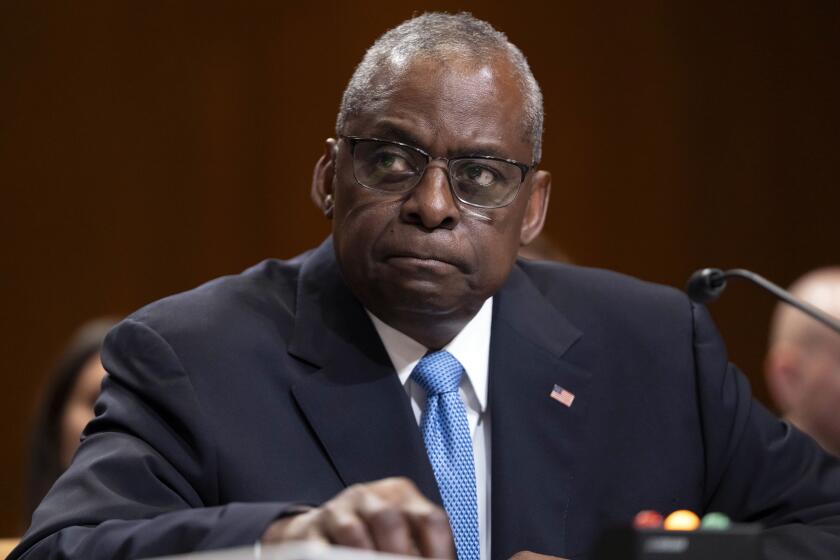Intense Debate at Hearing Tackles Issue of Nurse Staffing at Hospitals
How many patients can one nurse safely care for?
That question was debated Friday at a spirited hearing in downtown Los Angeles about state regulations that will set staffing ratios at hospitals.
The Legislature three years ago asked the California Department of Health Services to determine the ratios. At the first of three hearings, about 300 people from a variety of organizations, hospitals and unions turned out to comment on the department’s proposals.
Hospital industry officials argue that California already has one of the worst nurse shortages in the nation and that rigid staffing requirements would be nearly impossible to meet.
Many nurses say, however, that they are so overloaded that they fear for patients’ safety, and that better working conditions would lure nurses back to the field.
Mary Bailey, a nurse at Long Beach Memorial Medical Center, said she cares for as many as eight patients at a time, and others told of caring for 12 in one shift.
“I am responsible for coordinating my patients’ care, all their medications, the X-rays, all their lab work,” Bailey said. “If I am lax in that at all, a patient could have a poor outcome.”
Nurses from Massachusetts, where similar legislation will be introduced next month, and Arizona and Missouri traveled to Los Angeles to lend their support.
“We’re fighting exactly the same problems in Massachusetts,” said Julie Pinkham, executive director of the Massachusetts Nurses Assn. “What’s driving nurses out of the field is going to work knowing you can’t do an adequate job,” she said. “It’s not like if you make a mistake [in other jobs]. You have to face family members.”
Under the state’s proposal, hospitals would be required to have an initial ratio of one nurse for every six patients in medical/surgical units, reduced to a 1-5 ratio after one year. Most hospitals in the state now have a 1-6 ratio.
The California Nurses Assn. and the Service Employees International Union, which represents registered and vocational nurses, both would prefer 1-4 staffing ratios in medical/surgical units.
“This is a historic moment for nursing,” said nurse Luisa Blue of SEIU. But she said the state ratios are so lenient that staffing would be improved only at the worst hospitals.
The two nursing groups differ on one key point: The association wants staffing ratios to be specific to registered nurses -- not licensed vocational nurses. Because vocational nurses must be supervised by RNs, the patient load on registered nurses will not decrease if they are still monitoring vocational nurses’ patients, officials said.
The union supports allowing up to 50% staffing by vocational nurses, as the state proposes. The union says vocational nurses should be allowed to perform up to their legally determined scope of practice.
Officials from the California Healthcare Assn., which represents the hospital industry, asked the state to remember that hospitals have alternatives to meeting staffing ratios: They can always downsize.
“My colleagues will comply with the law, but severe staffing requirements would cripple most hospitals,” said Stefanie Mearns of the association. “I imagine you will see hospitals close or they will close down their emergency rooms.”
The other Department of Health Services hearings on nurse staffing will be held Tuesday in San Francisco and Dec. 4 in Fresno.
More to Read
Get the L.A. Times Politics newsletter
Deeply reported insights into legislation, politics and policy from Sacramento, Washington and beyond. In your inbox three times per week.
You may occasionally receive promotional content from the Los Angeles Times.






